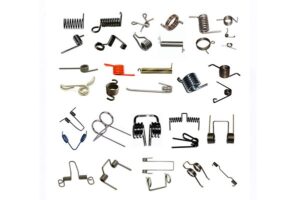Understanding Torsion Spring Stress: Factors, Fatigue, and Design Considerations

Torsion springs play a crucial role in numerous mechanical systems where rotational force and torque are required. These springs are designed to generate torque when twisted, storing and releasing energy for various applications. This article aims to provide a comprehensive understanding of torsion spring stress, exploring the factors influencing it, the concept of fatigue, and design considerations for optimal performance and longevity.
1. Factors Influencing Torsion Spring Stress:
– Wire Diameter: The diameter of the wire used in the torsion spring determines its strength and stiffness. Thicker wire diameters can withstand higher stresses and offer greater resistance to deformation.
– Number of Coils: The number of coils affects the angular deflection and the amount of energy that can be stored or released by the spring. More coils result in a softer spring with lower stress levels.
– Material Selection: The choice of material is critical in determining the spring’s ability to handle stress and resist fatigue. Common materials include high-carbon steel, stainless steel, and various alloys, each offering different strength and fatigue properties.
– Spring Diameter and Length: The physical dimensions of the spring, such as diameter and length, impact its ability to handle stress. Longer and thinner springs tend to experience higher stress levels.
– Mounting Configuration: The manner in which the torsion spring is mounted or supported affects the distribution of stress along its body. Proper mounting techniques help minimize stress concentrations and ensure uniform loading.
2. Understanding Torsion Spring Fatigue:
Torsion springs are subjected to repetitive cycles of loading and unloading, leading to potential fatigue failure. Fatigue occurs when the spring is exposed to stress levels below its ultimate strength but over an extended period. Over time, this cyclic loading causes microscopic cracks to form and propagate, leading to eventual failure. Factors influencing torsion spring fatigue include stress amplitude, stress ratio, and the number of cycles endured.
3. Design Considerations for Optimal Performance:
– Load and Stress Analysis: A thorough analysis of the expected load and stress conditions helps determine the appropriate wire diameter, number of coils, and material selection to safely handle the required torque.
– Spring Calculations: Accurate calculations, such as spring rate, maximum deflection, and stress levels, ensure the spring is designed to operate within its specified limits.
– Fatigue Life Prediction: Advanced computational methods, such as finite element analysis, can predict fatigue life by simulating stress cycles and identifying potential failure points within the spring.
– Spring End Design: The design of the spring ends plays a significant role in distributing stress evenly across the body of the spring, reducing stress concentrations, and minimizing the risk of premature failure.
– Material Selection and Heat Treatment: Choosing the right material and applying appropriate heat treatment processes enhance the spring’s fatigue resistance and overall performance.
Conclusion:
Torsion springs are vital components in various mechanical systems, providing rotational force and torque. Understanding torsion spring stress, including the factors influencing it, fatigue phenomenon, and design considerations, is crucial for ensuring optimal performance and longevity. By considering critical design factors, performing accurate calculations, and selecting appropriate materials, engineers and designers can create torsion springs that withstand the demands of their intended applications, offering reliable and durable operation.






